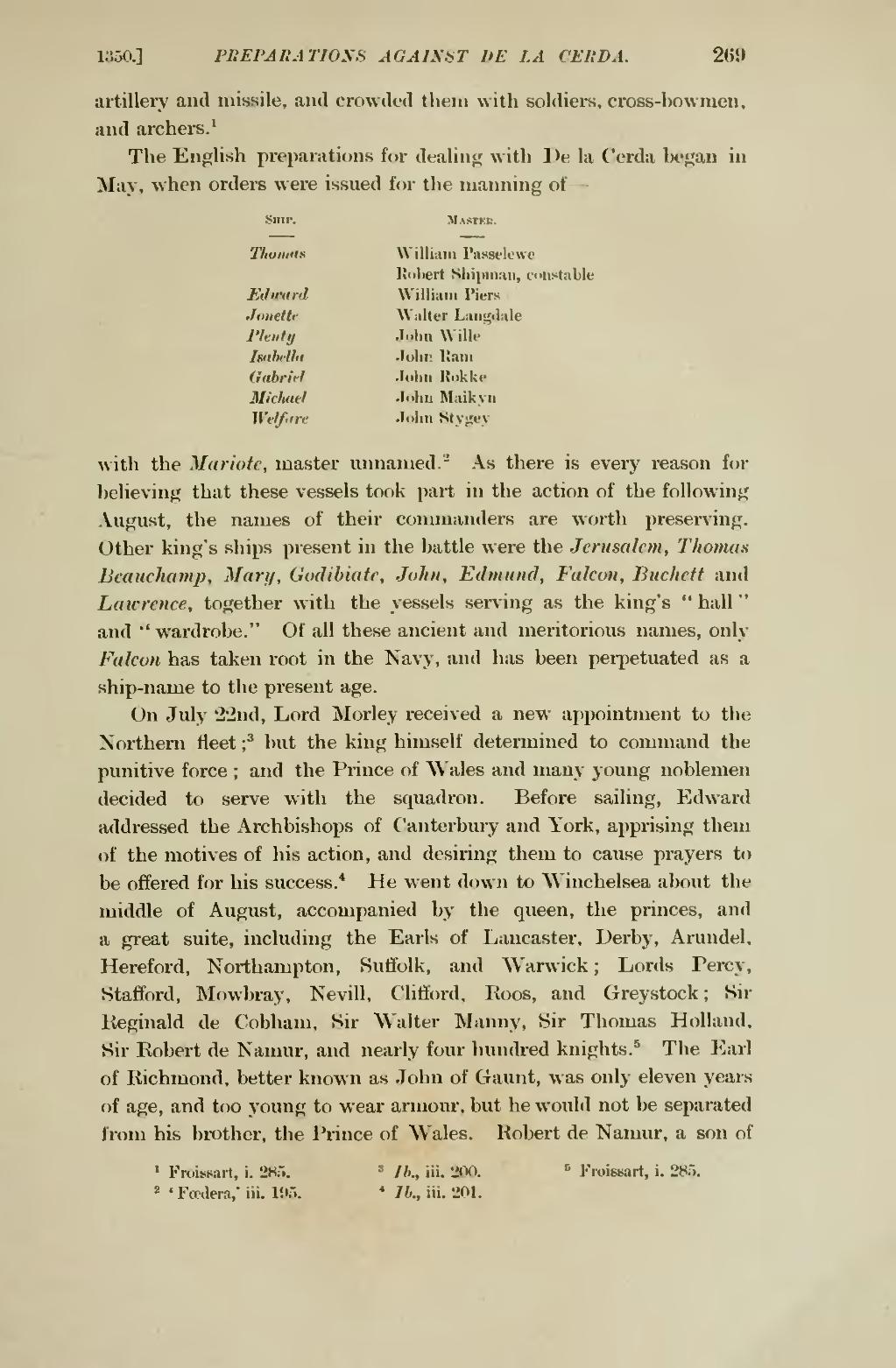artillery and missile, and crowded them with soldiers. cross-bowmen. and archers.[1]
The English preparations for dealing with De la Cerda began in May, when orders were issued for the manning of—
| Ship. |
Master. |
| Thomas | William Passelewe Robert Shipman, constable |
| Edward | William Piers |
| Jonette | Walter Langdale |
| Plenty | John Wille |
| Isabella | John Ram |
| Gabriel | John Rokke |
| Michael | John Maikyn |
| Welfare | John Stygey |
with the Mariote, master unnamed.[2] As there is every reason for believing that these vessels took part in the action of the following August, the names of their commanders are worth preserving. Other king's ships present in the battle were the Jerusalem, Thomas Beauchamp, Mary, Godibiate, John, Edmund, Falcon, Buchett and Lawrence, together with the vessels serving as the king's "hall" and "wardrobe." Of all these ancient and meritorious names, only Falcon has taken root in the Navy, and has been perpetuated as ship-name to the present age.
On July 22nd, Lord Morley received a new appointment to the Northern fleet;[3] but the king himself determined to command the punitive force; and the Prince of Wales and many young noblemen decided to serve with the squadron. Before sailing, Edward addressed the Archbishops of Canterbury and York, apprising them of the motives of his action, and desiring them to cause prayers to be offered for his success.[4] He went down to Winchelsea about the middle of August, accompanied by the queen, the princes, and a great suite, including the Earls of Lancaster, Derby, Arundel, Hereford, Northampton, Suffolk, and Warwick; Lords Percy, Stafford, Mowbray, Nevill, Clifford, Roos, and Greystock; Reginald de Cobham, Sir Walter Manny, Sir Thomas Holland, Sir Robert de Namur, and nearly four hundred knights.[5] The Earl of Richmond, better known as John of Gaunt, was only eleven years of age, and too young to wear armour, but he would not be separated from his brother, the Prince of Wales. Robert de Namur, a son of
